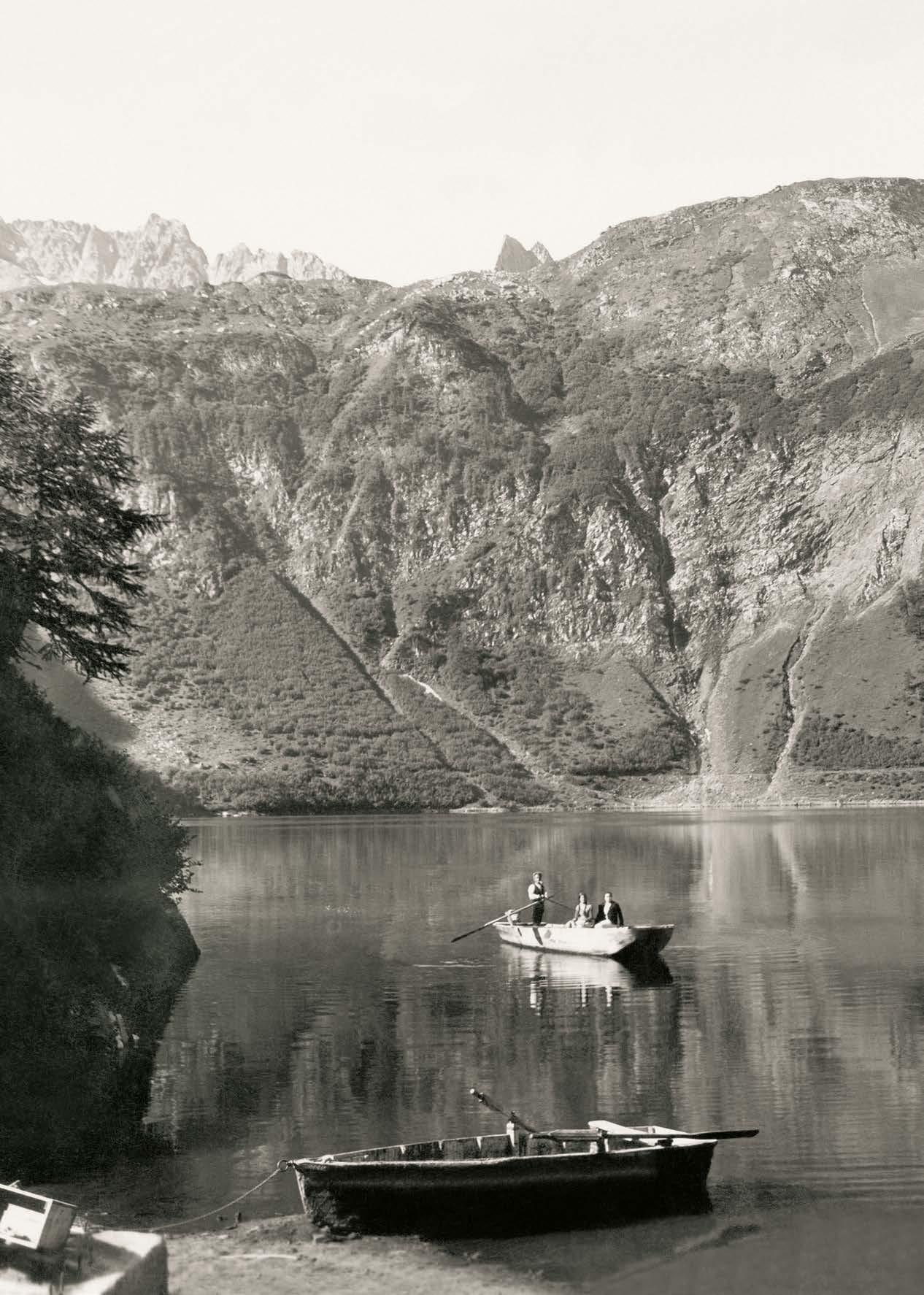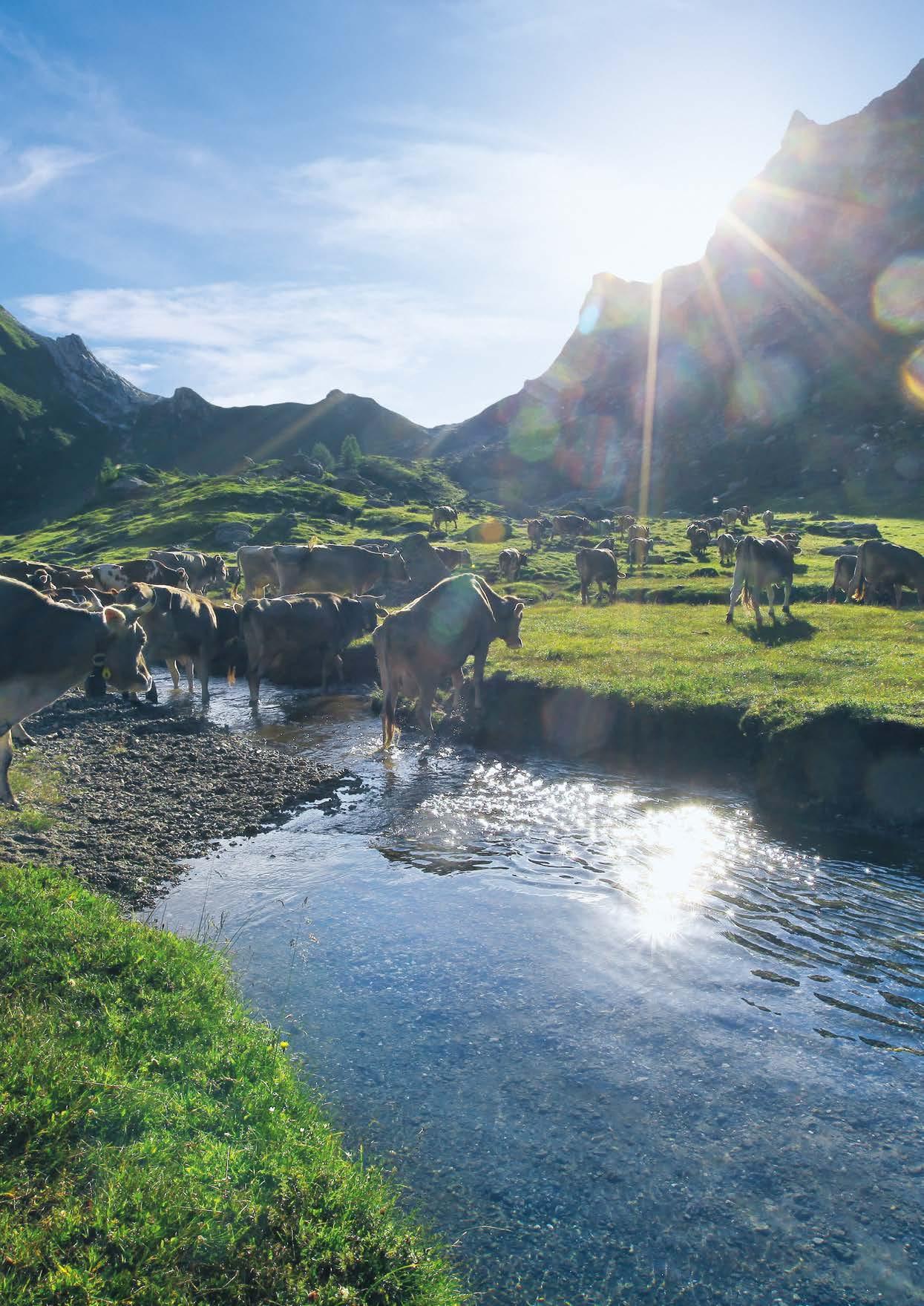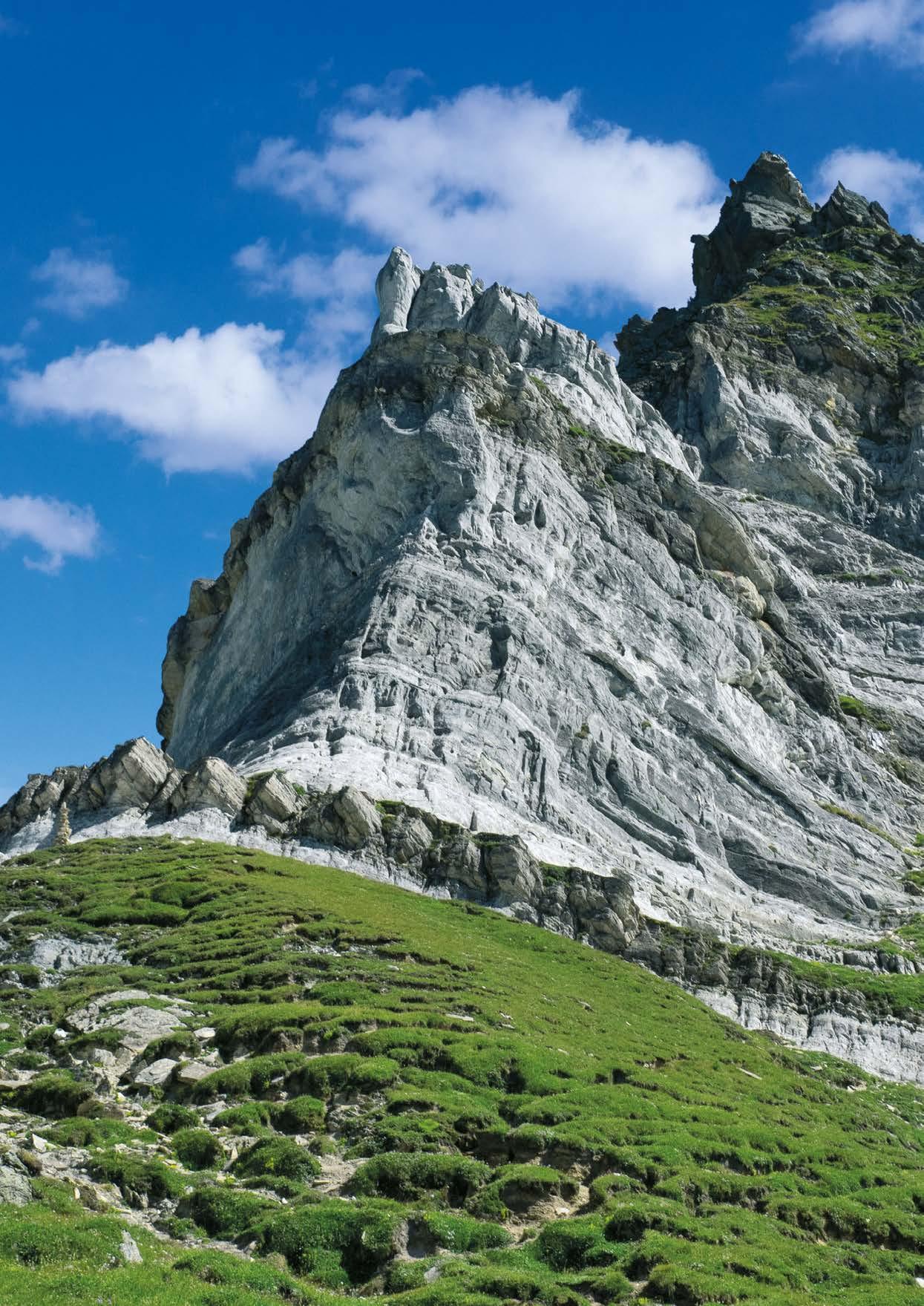
12 minute read
Report of the statutory auditor on the financial statements
Report of the statutory auditor
to the General Meeting of Banca del Sempione SA Lugano
Advertisement
Report of the statutory auditor on the financial statements
As statutory auditor, we have audited the financial statements of Banca del Sempione SA, which comprise the balance sheet, income statement, statement of changes in equity and notes (pages 66 to 79), for the year ended 31 December 2016.
Board of Directors' responsibility
The Board of Directors is responsible for the preparation of the financial statements in accordance with the requirements of Swiss law and the company’s articles of incorporation. This responsibility includes designing, implementing and maintaining an internal control system relevant to the preparation of financial statements that are free from material misstatement, whether due to fraud or error. The Board of Directors is further responsible for selecting and applying appropriate accounting policies and making accounting estimates that are reasonable in the circumstances.
Auditor’s responsibility
Our responsibility is to express an opinion on these financial statements based on our audit. We conducted our audit in accordance with Swiss law and Swiss Auditing Standards. Those standards require that we plan and perform the audit to obtain reasonable assurance whether the financial statements are free from material misstatement.
An audit involves performing procedures to obtain audit evidence about the amounts and disclosures in the financial statements. The procedures selected depend on the auditor’s judgment, including the assessment of the risks of material misstatement of the financial statements, whether due to fraud or error. In making those risk assessments, the auditor considers the internal control system relevant to the entity’s preparation of the financial statements in order to design audit procedures that are appropriate in the circumstances, but not for the purpose of expressing an opinion on the effectiveness of the entity’s internal control system. An audit also includes evaluating the appropriateness of the accounting policies used and the reasonableness of accounting estimates made, as well as evaluating the overall presentation of the financial statements. We believe that the audit evidence we have obtained is sufficient and appropriate to provide a basis for our audit opinion.
Opinion
In our opinion, the financial statements for the year ended 31 December 2016 comply with Swiss law and the company’s articles of incorporation.
PricewaterhouseCoopers SA, via della Posta 7, casella postale, CH-6901 Lugano, Switzerland Telefono: +41 58 792 65 00, Fax: +41 58 792 65 10, www.pwc.ch
PricewaterhouseCoopers SA is a member of the global PricewaterhouseCoopers network of firms, each of which is a separate and independent legal entity.
Report on other legal requirements
We confirm that we meet the legal requirements on licensing according to the Auditor Oversight Act (AOA) and independence (art. 728 CO and art. 11 AOA) and that there are no circumstances incompatible with our independence. In accordance with art. 728a para. 1 item 3 CO and Swiss Auditing Standard 890, we confirm that an internal control system exists which has been designed for the preparation of financial statements according to the instructions of the Board of Directors. We further confirm that the proposed appropriation of available earnings complies with Swiss law and the company's articles of incorporation. We recommend that the financial statements submitted to you be approved.
PricewaterhouseCoopers SA
Beresford Caloia
Audit expert Auditor in charge Luca Vitali
Audit expert
Lugano, 7 April 2017
2
Put your trust in those who know the way and the value of time
An excursion can be a journey through time, as well as through different environments, situations and climates. In the walk from the 1,850 metres of Lake Tremorgio to the top of Campo Tencia, at an elevation of 3,071, we cross meadows, conifer woods, glaciers and finally bare rock. This route represents just a small part of what the rock itself has seen over the course of thousands of years. Indeed, over 200 million years ago the rock was a sea bed, before emerging and being walked by dinosaurs during the Jurassic period, up to 145 million years ago. It then evolved slowly over the years, right up to the world we know today. Reasoning over a long time horizon is a purely mental exercise, and yet it allows us to realise that our daily urgencies, the uncertainties of our society and the volatility of financial markets are only relative. In its essence, putting our trust in Banca del Sempione means just that: choosing a travel companion who helps us to look beyond the immediate and to organise our future in a better
way.
From Tremorgio to pizzo Campo Tencia
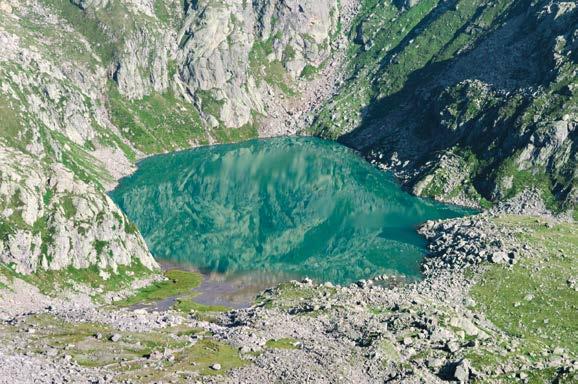
Previous page:
The Campo Tencia hut
In sequence: Lake Morghirolo
The Prevat window From the end of May to October an excursion is possible from Lake Tremorgio (1,850 m) to pizzo Campo Tencia (3,071 m), the highest peak entirely on Ticino soil, as well as the indisputable king of the Piumogna valley, whose clear waters characterise the spectacular Dalpe and Faido waterfalls. It usually takes two days for this route, but the more expert can also do it in just one day, as long as they leave early in the morning. The route therefore includes Rodi, the climb up to the Tremorgio, alpe Campolungo and the trek up to the Campo Tencia hut, where you continue as far as the peak with the same name. On foot, from Rodi to the Tremorgio hut, you need to calculate around three hours (with about fifteen minutes by cable-car) and around one thousand metres of steep slopes until the Tremorgio basin. At fewer than five minutes from the lake, on a promontory, we find the Tremorgio hut, where you can enjoy excellent local products and hot meals. From here starts the winding, steep path which in about 60 minutes will take you to the magnificent Campolungo plain. Here in July you can find one of the most beautiful flowers of the Alps blossoms: the blue alpine Columbine which has always inspired love poems and whose five curved spurs remind us of the claws of an eagle. Between lakes Tremorgio and Campolungo (Leìt) extend the rich pasture lands of Alpe Campolungo, resounding with the sound of the bells of the cows who feed off the particular aromatic grasses that cover the ground, such as Alpine Lovage (Ligusticum mutellina), Alpine French Honeysuckle (Hedysarum hedysaroides) and Alpine Clover (Trifolium alpinum). Thanks to this mixture, the cheese of Alpe Campolungo, with its unique colour and flavour, is one of the best of the Ticino. The water which descends from the lake seems to never want to leave this plain, surrounded by bold mountains. The whole of the route is characterised by very ancient geological formations: from the calcareous schists of the Jurassic period containing the lake basin, from the dolomite marbles to the cellular dolomite of the Triassic period, whitish and floury of the Vanit Pass, up to the Gneiss and crystalline micascists of the pre-Triassic basement. Here the very rare and unique example of Alexandrite, still kept at the Natural History Museum of Milan, was found. Arrival at the Leìt hut (2,260 m) is just as spectacular, not only because of the many small lakes you can admire, but also because of the diversity of the terrain and scenery: from the steep stone slopes you go on to terraces of rocks smoothed by glaciers, by the streams that descend from pizzo Campolungo to the impressive grey spur of pizzo Prèvat above, a favourite destination for rock climbers who love excitement. Proceeding along the ridge you keep to the left of the slope, while to the right you can already see pizzo Campolungo until you pass the Leìt pass. After crossing the beautiful plateau and passing the stream which descends from Lake Morghirolo before flowing into the Piumogna, there are still about thirty minutes of steep climbing to go before
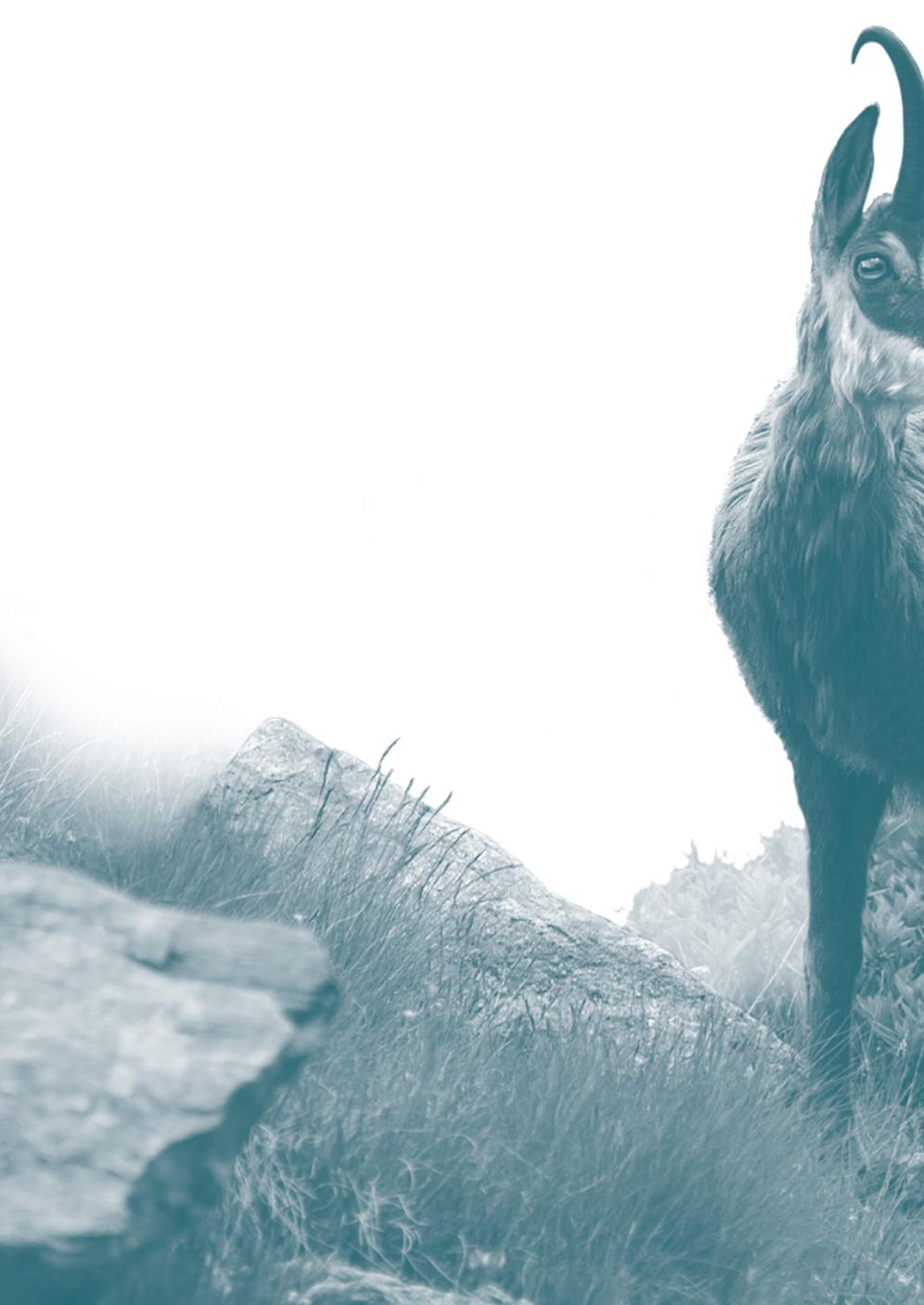
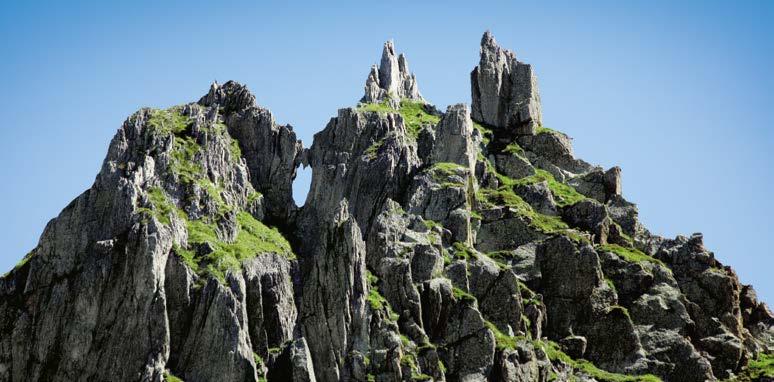
reaching the first hut of the Ticino Mountains, at Campo Tencia at an elevation of 2,140 metres, with its characteristic flag. The place is just as spectacular: we are on a terracing called “poggio del Giubin”, which offers a view to the south east as far as the Adula glacier. It is not unusual to see a lammergeyer or to hear the whistle of a marmot. Carrying on, the route becomes more demanding, often without any obvious path, with exposed ground, steep grassy slopes, even if the snowfields are not dangerous. Good equipment as well as a good sense of direction are therefore recommended. Pizzo Campo Tencia, enclosed between Val Chironico, Val Piumogna and Val di Prato, can be reached from the route marked in white and blue: from the Campo Tencia hut it heads south before climbing up again on the right side of the “löita delle Giubine”, until the rocky point where you cross the river descending from the little Croslina glacier. You must pay great attention when crossing the river. Then you reach a river which in the summer may still be covered by snow, making it easier to get over, and then you climb up a little path crossing steep rocky grassy slopes until you reach the ridge visible from the hut. From here you have a splendid view from Lake Morghirolo to Pizzo Campolungo, Pizzo del Lambro and the Piumogna Valley. The marked path heads south-east, beyond the granite rocks and therefore into a wonderfully coloured world, made of bright orange rocks that are truly amazing, especially at dawn when the sun seems to set them alight. It is here that Lake Croslina (2,640 m) rests with its apple green colour. Then follow the route to the peak, over the tongue of ice that joins the two glaciers, called “Bocchetta”, at an elevation of 2,974 metres. This is “the enormous monster lying on the side of the mountain (…) emerging from the steep crags that border it” described at the end of the Nineteenth century by a trekker. The breath-taking view will reward your effort: from this extraordinary pyramid of stone and ice you can see the Basodino massif (3,272 m) and the Bernese and Vallesian giants such as Aletschhorn and Finsteraarhorn rising to over 4,000 metres. One possible descent is the one that leads to Dalpe, in the Bedrina area, passing through the Piumogna valley. Leaving behind the amphitheatre that is home to the hut, surrounded by the impressive peaks, you descend to the plateau of Alpe Croslina, then Sgnòi and Pian Piumogna with a total difference in elevation of about 1,150 metres. Here you are surrounded again by the acidic scent of the Alp barren meadows and May pastures. The soundtrack is that of the distant waters of the roaring streams; the colour is that of the gentians and the wild rhododendron. The didactic posters of the Sgnòi mountain pastures tell us about the presence of local herbivores, carnivores, rodents and birds. The forestry road of Pian Piumogna leads gently to Alpe Gèra, through larch and pine woods, while the river Piumogna is omnipresent. From here you cross the village of Dalpe to finally arrive, on the other side, at the Bedrina area, where along just over a kilometre you can see a delicate and unique biotope, particularly rare south of the Alps.

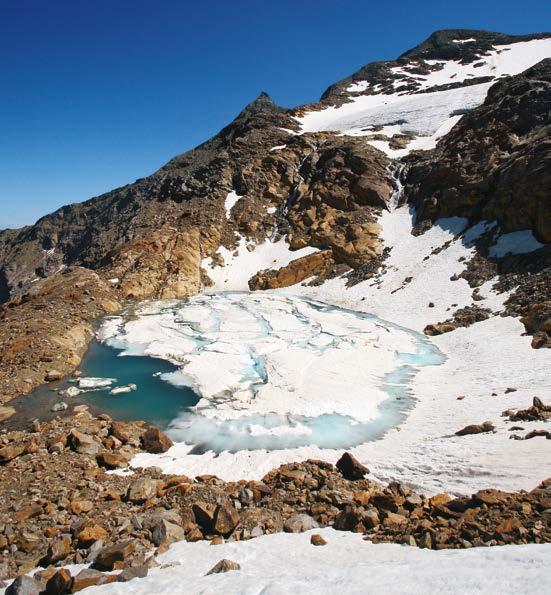
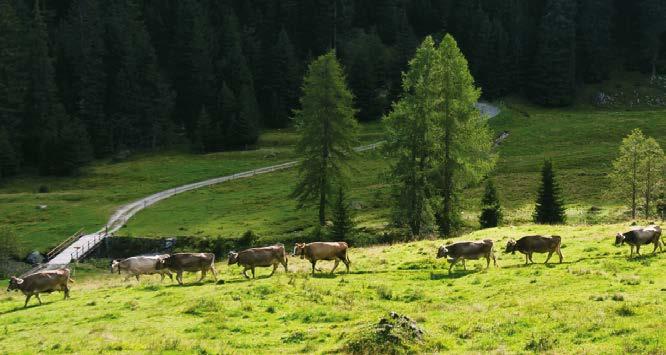
In sequence:
The lake at the foot of the huge Croslina glacier, on pizzo Tencia
A moment of the transhumance in the Piumogna valley
The marmot, a typical animal of our alps, which can easily be seen in the region
Following page:
The Piumogna waterfall at Faido
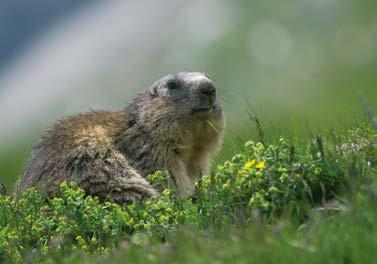

Thanks We would like to thank for their precious cooperation the people and institutions that provided and permitted the reproduction and publication of the images necessary for the making of this annual report, including:
- Marco Antognini, geologist - Cantonal Museum of Natural History, Lugano - Azienda Elettrica Ticinese (AET) - Officine Idroelettriche della Maggia (OFIMA)
The pictures are provided by:
1st + 2nd cover Enrico Boggia page 2 Angelo Valsecchi page 4 + 5 Enrico Boggia page 8 + 11 Ely Riva page 13 Sven Stoppani page 14t Vincenzo Donnarumma, by courtesy of Cantonal Museum of Natural History, Lugano
page 14d Enrico Boggia
page 15t page 15d page 16 page 22 page 41 page 45 page 46t page 46m page 46d page 47ml page 47mr page 47d page 48 page 55 page 58 page 61
Sven Stoppani Lucio Bruseghini Angelo Valsecchi Marco Volken Jason Protheroe Unknown author Zentralbibliothek Zürich, Graphische Sammlung und Fotoarchiv U. S. National Library of Medicine AET photo archive Officine Idroelettriche della Maggia Ely Riva AET photo archive Yvonne Böhler Roberto Buzzini Judith Mijderwijk Ely Riva page 62t Maria Ponzio page 62d + 63t Marco Antognini – Cantonal Museum of Natural History, Lugano page 63m + d Sven Stoppani page 64 Ely Riva page 69 Judith Mijderwijk page 70 Marco Volken page 83 + 84t Marco Volken page 84d Ely Riva page 85t Marco Volken page 85dl Ely Riva page 85dr Marco Cairotti page 86 Christian Ulrich
legend t = top, m = middle, d = down, l = left, r = right
All images are duly subject to © Copyright of the various owners
The inserts were drafted by Marco Jeitziner.
Concept and coordination Lucasdesign.ch
Airolo St. Gotthard A tiny Alpine corner of Alto Ticino. This is the Campolungo region, a mountainous area of just 45 square kilometres, equal to just over 1.5% of the whole Canton, which, however, is home to more than one absolute rarity at global level. Such as the “Campolungo butterfly”, a species that is unique in the world, identified at the end of the nineteenth century, rapidly becoming famous all over Europe. Or the red-blue Corundum crystals and the Tourmaline green ones, unique in Switzerland and rare all over the world. And then the unusual “dolomite” formations which drew the attention of Déodat de Dolomieu, to whom we owe the name of that type of rock. It was here that he made his last Alpine journey since he died only two months after his expedition in the Campolungo area, in the autumn of 1801.
It is not a rule, but a happy possibility that even this limited, remote and not particularly famous area can be the home of large or small treasures.
It is not an exclusively geographical circumstance. Banca del Sempione is a proud example of it: a bank which remains close to its clients, concentrated in a circumscribed area – between Lugano, Bellinzona, Chiasso and Locarno – and yet able to propose a unique range of services, based on highly developed expertise, advanced technologies and international operations. A bank that is increasingly your bank.
Rodi

Tremorgio lake
Tremorgio hut
Campolungo alp Vanit pass
Campolungo pass
Prévat peak Leit hut
Leit lake
Campolungo peak
Morghirolo lake Prato Leventina
Cadonigo alp
Lambro peak
Dalpe
Croslina peak Campo Tencia hut
Faido
Points of interest Alpine huts Tremorgio cableway Ridges Cantonal road Trekking route



